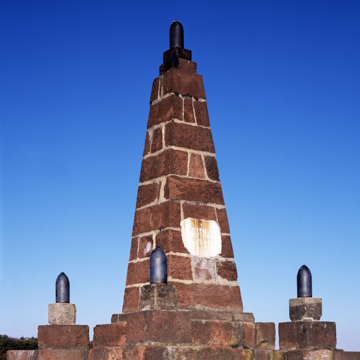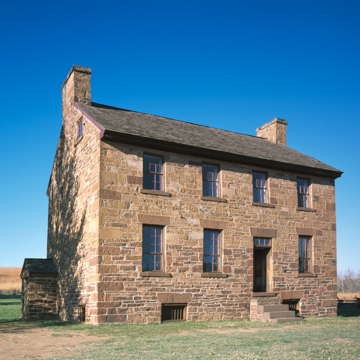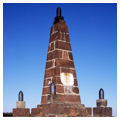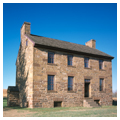The Union and Confederate armies met twice in this area, known variously as Manassas and Bull Run, July 18–21, 1861, and August 25–28, 1862. The major portion of the battlefield park, formed in the 1930s, encompasses nearly 5,000 acres of open fields and woods, which, from a landscape and protected-open-space point of view, is significant. From an architectural point of view, the major interest is fourfold. The Visitors Center (1941–1942, later additions, National Park Service Design Staff) has a massive and primitive Doric-columned portico that recalls Arlington House. Nearby is a statue depicting Stonewall Jackson (1938, J. P. Polla); the base is inscribed, “There stands Jackson, like a
You are here
Manassas National Battlefield Park
6511 Sudley Rd. (VA 234)
If SAH Archipedia has been useful to you, please consider supporting it.
SAH Archipedia tells the story of the United States through its buildings, landscapes, and cities. This freely available resource empowers the public with authoritative knowledge that deepens their understanding and appreciation of the built environment. But the Society of Architectural Historians, which created SAH Archipedia with University of Virginia Press, needs your support to maintain the high-caliber research, writing, photography, cartography, editing, design, and programming that make SAH Archipedia a trusted online resource available to all who value the history of place, heritage tourism, and learning.




